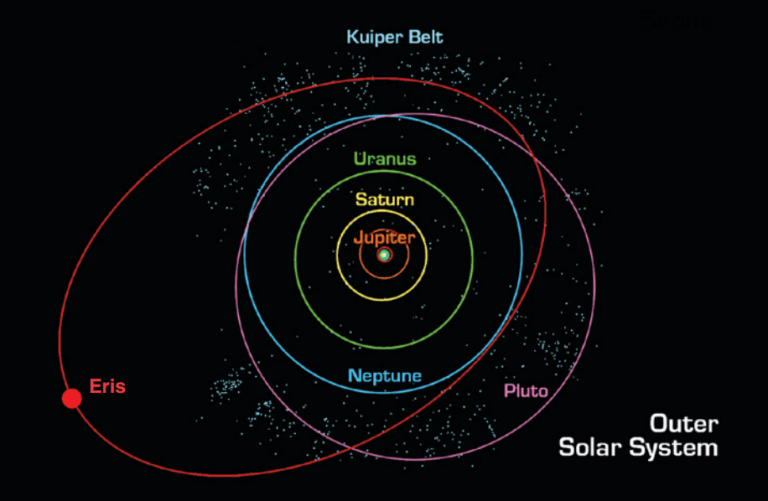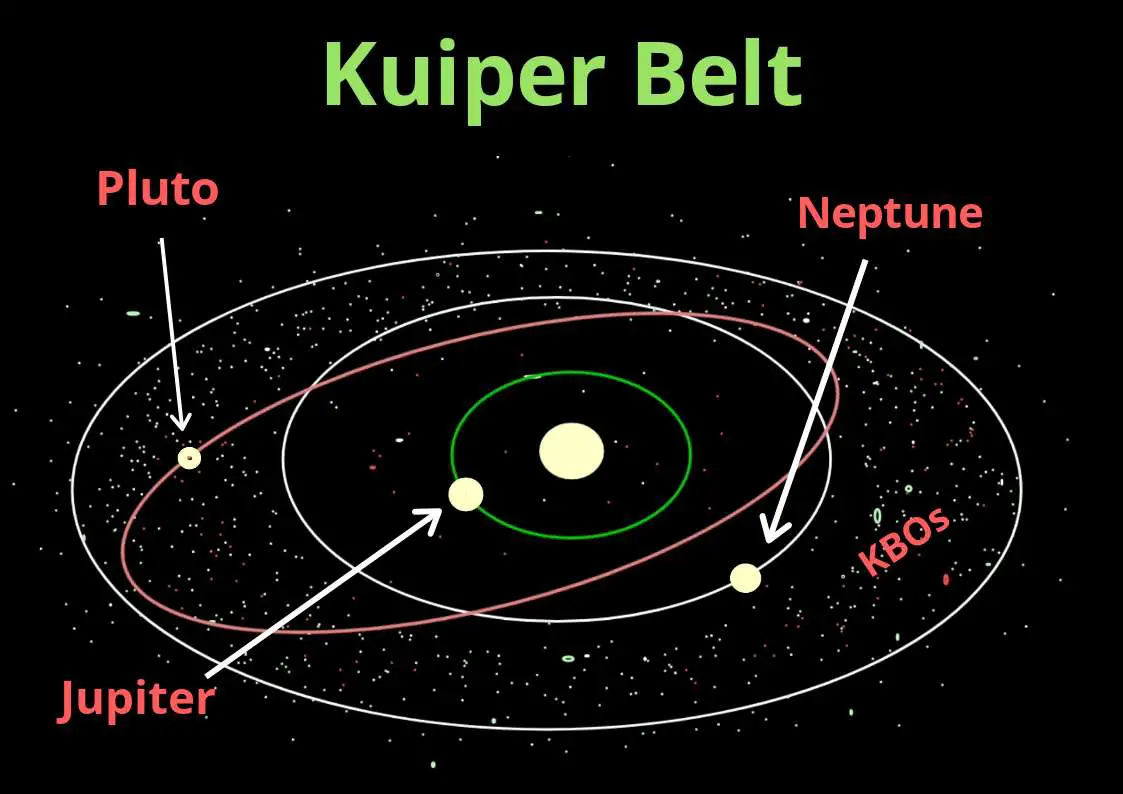The kuiper belt is a donut shaped region beyond neptune s orbit that contains millions of icy objects referred to as kuiper belt objects kbos or trans neptunian objects tnos

The Kuiper Belt: Exploring the Donut-Shaped Region Beyond Neptune’s Orbit

Have you ever wondered what lies beyond Neptune’s orbit in our vast solar system? Well, prepare to be intrigued, as we embark on a journey to explore the captivating and mysterious Kuiper Belt. Nestled beyond the eighth planet of our system, this donut-shaped region harbors millions of icy objects, known as Kuiper Belt objects (KBOs) or trans-Neptunian objects (TNOs). So, let’s delve deeper into the realm of the Kuiper Belt and unravel its secrets!
The Kuiper Belt: A Brief Overview
The Kuiper Belt was named after Dutch-American astronomer Gerard Kuiper, who first theorized its existence in 1951. Located beyond Neptune, this vast region stretches from approximately 30 to 55 astronomical units (AU) away from the Sun. To put that into perspective, 1 AU is equivalent to the average distance between the Earth and the Sun, which is about 93 million miles or 150 million kilometers.

A Home for Icy Wanderers
The Kuiper Belt is a captivating celestial neighborhood that offers a home for a multitude of icy wanderers. These objects often comprise a mixture of rock and volatile compounds, such as water, methane, and ammonia. Due to their icy composition, KBOs and TNOs are sometimes referred to as “ice dwarfs.” Radiating a faint gleam, these frigid denizens preserve valuable insights into the formation and evolution of our solar system.
Pluto: The Most Famous Neighbor
One of the most well-known residents of the Kuiper Belt is none other than Pluto. Originally classified as the ninth planet of our solar system before its reclassification in 2006, Pluto holds a special place in our hearts. It became the first Kuiper Belt object to be explored up close when NASA’s New Horizons spacecraft flew by in 2015, providing us with an unprecedented glimpse into this enigmatic world.
Unveiling the Birth of Planets
Investigating the Kuiper Belt offers scientists a unique opportunity to peer back in time and witness the birth of planets. By studying the composition, structure, and interactions of KBOs and TNOs, researchers gain valuable insights into the early stages of planet formation. This knowledge is crucial for our understanding of not only our own solar system but also the countless planetary systems scattered throughout the vastness of our universe.
A Quest for Exploration
The exploration of the Kuiper Belt continues to unfold, with numerous missions and telescopic observations aimed at unraveling its secrets. The Kuiper Belt Object Detection Camera (KBOD) on the upcoming Nancy Grace Roman Space Telescope, set to launch in the mid-2020s, promises to revolutionize our understanding of this intriguing doughnut-shaped region. With its enhanced capabilities, researchers hope to uncover countless more discoveries and shed light on the mysteries that lie within the Kuiper Belt.
Sources: NASA: The Kuiper Belt
This article provides a fascinating glimpse into the extraordinary Kuiper Belt, a donut-shaped region beyond Neptune’s orbit that is teeming with icy objects known as Kuiper Belt objects (KBOs) or trans-Neptunian objects (TNOs). As we explore the mysteries hidden within this distant realm, we gain invaluable knowledge about our own solar system’s formation and the processes that shape planetary systems across the universe. Join us on this captivating journey as we venture into the depths of the Kuiper Belt!
Table Of Contents
Related Posts
Quick Links
Legal Stuff

